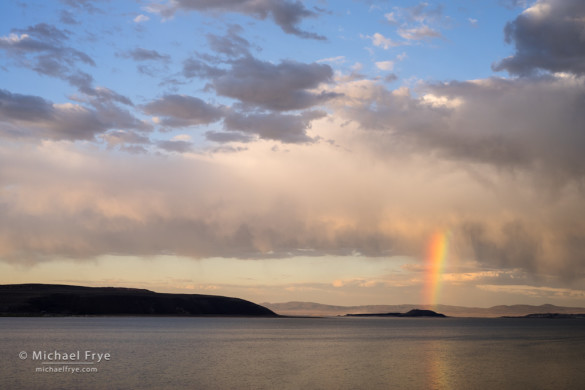
Rainbow over Negit Island, Mono Lake, California. Although I made other compositions of this scene with longer lenses, I liked the slightly wider perspective created by a normal 50mm lens, because it allowed me to include some of the blue sky.
The “normal” lens doesn’t get much love. Longer and shorter focal lengths seem more attractive, because they create unusual perspectives. As I wrote in this recent post, wide-angle lenses stretch space and make things look farther apart, sometimes creating a sense of depth, while telephoto lenses compress space and makes objects look closer together, helping to emphasize patterns and juxtapositions.
I, too, was guilty of disdain for the normal lens for many years. Although I used normal lenses (around 50mm for full-frame cameras, or about 35mm for APS-size sensors) for two decades with my film cameras, for a ten-year stretch the only lenses I used with my Canon DSLRs were 17-40mm and 70-200mm zooms. I never felt the need to fill the gap between 40mm and 70mm because I usually wanted to go either wide or long. On the rare occasions when I needed a focal length between 40mm and 70mm, I used 40mm and cropped.
When I bought my Sony A7r last year, I also got a Novoflex adapter so I could test some old Nikon lenses I had lying around. One of those lenses was a 50mm f/1.8 that I bought in the early ’90s. I think it was Nikon’s cheapest lens back then; it probably cost around $60. When I tested it on the A7r, this lens turned out to be extremely sharp – not wide open (no surprise for an inexpensive lens of that era), but from f/5.6 to f/16 it was tacky sharp from corner to corner. It’s probably the sharpest lens I own.
So for the price of the adapter I now have a very sharp lens for those occasions when 40mm is too short, and 70mm too long. And I’ve been surprised at how often I use this lens. It fills a gap, of course, but also serves as both a short telephoto and long wide angle. It can sometimes be used to create a sense of depth, but with tighter framing than a wide-angle lens, and without making background objects look too small. It also works for creating patterns in situations where I just can’t fit in everything at 70mm.
So I’ve developed a new appreciation for the lowly, under-appreciated normal lens. Some of my favorite images over the last year were made with that Nikon 50mm lens, and I couldn’t live without it now. I’ve included a small gallery of normal-lens images here, with extended captions to talk about the use of perspective.
Band of Light on El Capitan, Yosemite
This might be my best-known photograph, and it was made with a normal lens on a Mamiya 645 camera.
I first tried my 45mm lens (equivalent to about 28mm on a full-frame sensor), but quickly realized it was too wide, because it made El Capitan look small and insignificant (imagine El Cap looking half the size it does here: half the height, half the width). On the other hand, I wanted to include the snow-covered rocks in the foreground, which wouldn’t be possible with a telephoto lens. So I switched to the normal lens for that format (80mm), and stepped back to include the snow-covered rocks. The longer lens made El Cap look larger and more prominent, which was essential for showcasing that dramatic light.
Using that 80mm focal length required stopping down to f/22 and focusing carefully to get both foreground and background in focus. But although it would have been easier to keep everything sharp with the wide-angle lens, I’m glad I switched to the longer focal length. In this case the normal lens served as a long wide-angle, allowing me to create a near-far perspective while keeping the background prominent.
Aspens in Fog, Colorado
This is one of my favorite photographs from last year, made on a beautifully foggy morning in Colorado.
Claudia and I were driving along a dirt road when I spotted this juxtaposition of foreground aspens against a more distant aspen-covered hillside. A wide-angle lens would have been too wide here, forcing me to include either the bright, distracting sky that’s just out of the frame at the top, or roadside weeds at the bottom. A telephoto lens would have been too long; I wouldn’t have been able to fit all five foreground trunks in the photograph, or the leaves along the top and bottom that frame the view of the background hillside.
I think of this as a short telephoto perspective. The normal lens (that Nikon 50mm on the A7r) created just enough spacial compression to form a visual juxtaposition and comparison between the foreground and background trees, emphasizing the v-shaped patterns of the trunks both near and far.
Depth of field was an issue in this photograph as well. At f/16 I couldn’t quite get both the foreground and background trees critically sharp, no matter where I focused. I didn’t want to use f/22, as that small aperture would have created diffraction and softened the image. So I used focus-stacking, making three different exposures focused at three different distances (foreground, background, and in between), all at f/16, and then blended those three exposures together with Helicon Focus.
Setting Sun, Tuolumne Meadows
I think of this as a long wide-angle perspective. If I didn’t know better, I would have guessed that this photograph was made with a moderately short focal length, like 35mm. The mirror reflections of mountains and clouds give it a wide-angle feeling, and if you click on the image to see it larger you’ll notice grasses poking out of the water in the foreground, adding a hint of near-far perspective.
But this image was made with that Nikon 50mm lens on my Sony A7r. Again, a wider lens would have been too wide here, making the sun, trees, and mountains too small, and forcing me to include more blank, blue, uninteresting sky and reflections above and below.
Fog, Sun, and Gray Pines
Here, if I didn’t know what focal length was used, I’d have guessed 90 or 100mm – short telephoto territory. It looks like the background trees have been “pulled in” by a longer lens, creating a juxtaposition and visual comparison with the foreground trees, as well as a repeating pattern.
But as you’ve probably guessed by now, this image was made with a 50mm lens (the Nikon on the A7r). I needed to include some darker areas above the sun to hold the viewer’s eye in the frame, and a longer lens wouldn’t have allowed me to do that and still keep the darker row of trees along the bottom, as well as the trees near the right and left edges. In this instance the normal lens served as a short telephoto.
While ultra-wide and long telephoto lenses seem sexy, the most attractive lens is the one that works for the situation at hand. Sometimes a normal lens is just right.
What about you – do you ever use those in-between focal lengths, or do you always go wide or long?
— Michael Frye
Related Posts: Lenses and Perspective: The Long and the Short of It; Creating Depth: Beyond the Wide-Angle Formula
Did you like this article? Click here to subscribe to this blog and get every new post delivered right to your inbox!
Michael Frye is a professional photographer specializing in landscapes and nature. He is the author or principal photographer of The Photographer’s Guide to Yosemite, Yosemite Meditations, Yosemite Meditations for Women, Yosemite Meditations for Adventurers, and Digital Landscape Photography: In the Footsteps of Ansel Adams and the Great Masters. He has also written three eBooks: Light & Land: Landscapes in the Digital Darkroom, Exposure for Outdoor Photography, and Landscapes in Lightroom 5: The Essential Step-by-Step Guide. Michael has written numerous magazine articles on the art and technique of photography, and his images have been published in over thirty countries around the world. Michael has lived either in or near Yosemite National Park since 1983, currently residing just outside the park in Mariposa, California.

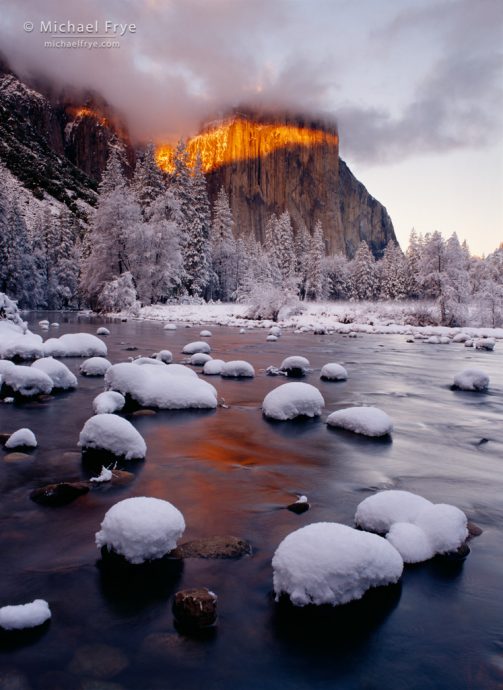
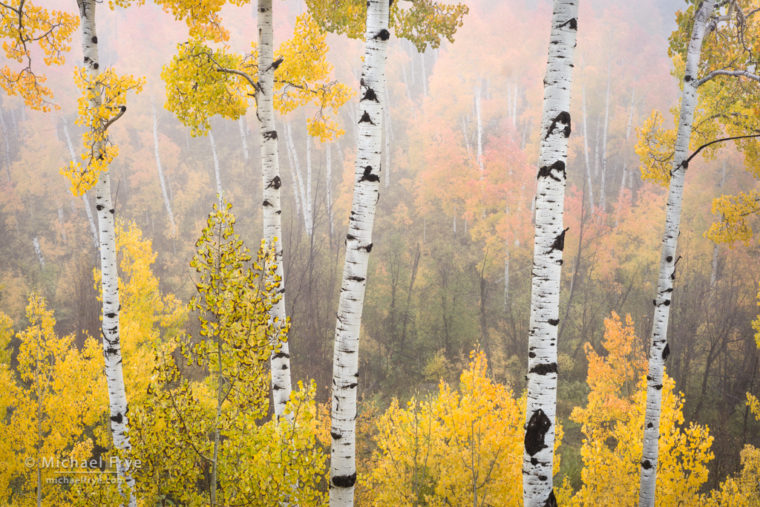
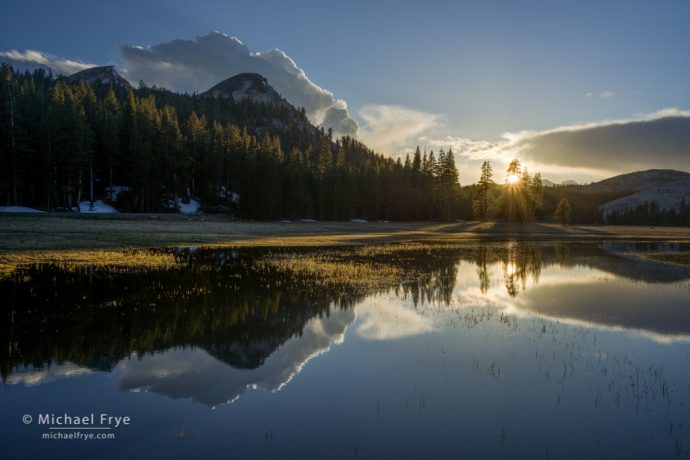
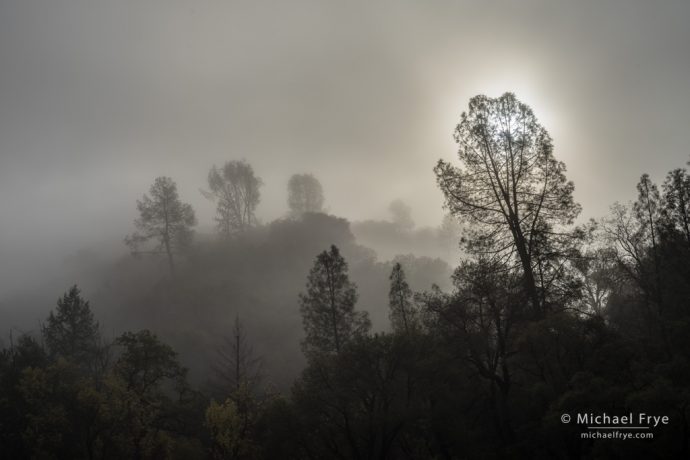








I have 3 lens for my A7r – the Sony Zeiss FE 16-35 F4, an old Minolta 70-210 F2.8 (F4 with adaptor) and the fabulous Sony Zeiss FE 55 F1.8. The sharpest of these lenses is easily the 55, and yet I never think to take it out of my bag when shooting landscapes (I mainly use it hand held for portraits etc at family events).
So thank you Michael for making me think how I might be able to make better use of the lens.
(BTW I really like the 16-35 – it is tack sharp from about f5.6 to f16 and acceptably sharp elsewhere)
Rob, I’ve never tried that 55mm, but it’s supposed to be one of the sharpest lenses made. Glad you like the 16-35 too; I need to try that one as well.
Michael, just back from a trip to Sedona and I went out of my way to use the 55mm. For the most part I was happy with the results, although it is an area where extra reach is probably better (I prefer my wife’s shots taken at ~ 70mm). Anyway, here are a couple of images using the 55 that I thought worked out quite well: https://www.flickr.com/photos/132288633@N02/sets/72157654011128478.
Robert.
Those did turn out well Robert. I’m not really advocating going out of your way to use the normal lens, but using the lens that fits the situation, and not neglecting that normal lens.
Ha. You’re right of course. Could have chosen my words better…
“… it was tacky sharp from corner to corner…” Tacky? 😉
I have a favorite 50mm photograph, too. You might remember it — I’ll flatter myself — the black and white photograph of trees and reflecting water along the edge of Tenaya Lake.
Here’s to “normal!”
Dan
I was wondering who would comment on that – of course I should have guessed. 🙂 That’s a favorite phrase of a friend of mine, which I kinda like, so I used it. And yes, I remember your photo of Tenaya Lake!
Thanks for this very useful article Michael – a very good read. With an upcoming trip to England’s Lake District in Cumbria, this has inspired me to take along my 35mm (50mm full frame equivalent) lens for my Fujifilm X-T1. This is certainly something I would not naturally pack on a landscape shoot but very much see the benefit after reading your article.
All the best, Jonathan
You’re welcome Jonathan, and I hope you have a great trip to the Lake District.
The 35mm on my Fuji (APS-C) is one of my favorite lenses. If I had to pick a single lens for a day of shooting, that would be it. My typical kit is a wide (14, or 10-24), the 35, and the 55-200; the 35 is all I need in the middle.
I’ve adapted a bunch of older nikkors as well; it’s fun to use them again with the manual focusing capabilities of the fuji, and they have some interesting characteristics.
Doug
Thanks Doug, and I’m glad you’re enjoying youpper-right 35, and your old Nikkors.
Great article on the always less favored 50mm lens. It makes you really think more seriously about putting it more to use. I have a Sigma 50mm 1.4 that I use sometimes on my Canon 5D Mark II. Last time I used it was in the somewhat overly dark Monterey Bay Aquarium. It worked good at times, but I had some trouble with the autofocus.
I hope you don’t mind me going another direction on this comment. I’m ready to upgrade my 5 year old Canon now. I’ve seriously been thinking about 2 choices, one is the choice you made with the Sony A7R and the other is the new Canon 5DS with a 50 mp sensor. Any advice or ideas? I have quite a few Canon L lenses already.
Thanks Keith. I don’t mind you “going in another direction.” But it’s hard to recommend what camera for someone to buy, as that’s a personal decision. The Canon hasn’t even come out yet, so it’s hard to say much about it. My guess is that it will have more noise than the A7r, especially shadow noise or read noise. But again, it hasn’t come out yet, and I haven’t tested it, so I can’t say anything about it for certain. And that’s only talking about the sensor; they’re very different cameras to use, and that’s a consideration too.
Makes sense. I use my current camera mostly for landscape work. I like the idea of the lighter portability of the Sony A7 line, but it involves changing direction with my lenses. So, I’ll probably wait and see the reviews on the new Canon model. I’ve heard that you can do a lot of cropping on it’s photos and still get satisfying results in the prints. Thanks for the quick response Michael.
It’s interesting that you “heard that you can do a lot of cropping,” considering that the camera hasn’t even come out yet! In theory, yes, 50 MP allows you to crop and still have enough pixels left over to make a decent print. But that’s only if you’re using extremely sharp lenses so that you’re getting the maximum resolution the sensor is capable of, and it depends also on how much you’re cropping. The 5Ds is 8688 x 5792 pixels. If you crop one-third of the frame (say one third off the right and one-third off the top), you’re down to 5786 x 3857 pixels, which is almost exactly the resolution of the 22 MP 5D Mark III. You could make a nice large print from this, as good as an uncropped image from a 5D Mark III, but only if, again, the lens was really sharp, there was no camera movement, and you nailed the focus. If the lens isn’t superb, you’d actually be able to make a sharper print from an uncropped image from the 5D3 using the same lens. Because the photo sites on the 22 MP sensor are larger and spaced farther apart, the lens doesn’t have to be as sharp in order to render all the detail the sensor is capable of capturing.
What I’m getting at is that a high-resolution sensor isn’t a magic bullet that can cure poor compositions or other problems. My experience with the 36 MP Sony has shown me that you need lenses that are super sharp from corner to corner to take advantage of that resolution, as well as flawless technique. Missing the focus ever-so-slightly degrades the image, and so does any vibration caused by mirror slap or shutter shake. That happens with any camera, of course, but it’s just more noticeable with a high-resolution sensor.
Thanks for the good points that you made Michael. That gives me more to chew on when it comes to making my decision. I do have good lenses for my 5D Mark II. The latest one that I got is the 24mm tilt-shift Canon lens. I’ve notice how much sharper it is in the corners versus my L type 16-35mm. I also shoot with the Canon 70-200mm L lens that seems pretty sharp. I understand about the focus issue too as I usually use, when my camera is mounted on a tripod, the LCD live view mode to zoom in and check the focus while using manual focus, then use the self-timer to take the shot. I think that’s about all I can do with my current camera. But sometimes we get in a hurry and and blow the shot too without doing what we need to do focus wise.
I have been seeing some people on YouTube that have been allowed to test shoot the 5DS and they seem to be giving it some good reviews. But I’ll probably wait until it comes out to make a decision on what to get.
Keith, something you might want to consider when comparing the A7R and the 5DS: http://diglloyd.com/blog/2015/20150206_1222-Canon5DS-dynamic-range.html. I can’t vouch for the accuracy of the comments, but it would be a factor if true, given the amazing dynamic range of the A7R.
Thanks for the link Robert I’ll check it out.
Great article on the lowly normal lens Michael! Great to read during a time she the photo forums are a flood with ultra wide 11mm images following the release of the Canon 11-24L lens. Always love that first image of the snow covered rocks at Gates of The Valley.
I have always carried and liked to use a 50mm lens probably as a result from a college B&W photography class in which our teacher required us to only use a normal lens. The normal lens is great for environmental portraits of people, animals, and special landscape features like a tree or rock etc.as you can separate the the subject from background but still have enough detail in the background and enough space around the foreground subject. I have used my Zeiss 50/2 lens to stitch wider images at places like tunnel view. I like to use it too on boring sky days when you don’t want to include much or any sky in the shot.
I treated myself last year to a Otus 55/1.4 and got to use it in one of my favorite images last fall involving a mother deer and her fawns in Awahnee meadow with half dome in background. The deer came towards us slowly while grazing as we waited patiently. The beautiful OOF bokeh rendering of half dome and the sharp deer emphasized in the foreground worked well. I guess it was a both a less wide angle shot to get just the deer and half dome with not much sky but also a short tele shot as I wanted half dome to be large and space between both to be compressed. Seeing/composing at 50mm can be hard but is well worth as your excellent example images show. Hope to see a flooded Tuolumne meadows again soon and the end of our long hard draught!
Good article Michael. I too love the “norm” lenses. However I mostly use a Voigt 40mm/F2 pancake lens on film. Great, extremely sharp lens with Aspherical surfaces. The 40mm pics have a Leica look to them. Hard to explain exactly.
Thanks Larry!